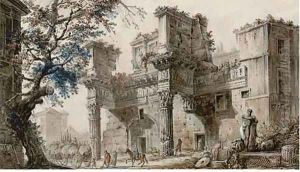Jean-Henry-Alexandre Pernet Paintings
Jean-Henry-Alexandre Pernet, often simply known as Alexandre Pernet, was a French artist born in 1836 in Paris. While not one of the most widely recognized figures in the world of art, Pernet contributed to the art scene during a time of significant change and progress in the 19th and early 20th centuries. He was a contemporary of the Impressionists, although his work did not align strictly with any particular artistic movement of the time.
Pernet was primarily known for his work as a painter, and his artistic endeavors reflected the traditional academic style. He received his formal art education at the École des Beaux-Arts in Paris, which was the hub for classical art training in France. There, he would have been schooled in the techniques and principles that dominated the French art scene until the advent of Impressionism and other avant-garde movements that would eventually overshadow the strict academic methods.
His career unfolded during a period when the art world was in flux. The latter half of the 19th century saw the rise of Impressionism, with artists like Claude Monet and Edgar Degas breaking from tradition and exploring new ways of depicting light and everyday life. Pernet, however, remained largely committed to the formal principles he was taught, which may explain why he did not gain the same level of fame as some of his contemporaries.
Despite this, Alexandre Pernet's works did exhibit a level of craftsmanship and a dedication to the artistic values of his time. He is known to have produced portraits, genre scenes, and historical paintings. His work was exhibited in Paris, including at the prestigious Paris Salon, which was the official art exhibition of the Académie des Beaux-Arts in Paris. Participating in this exhibition was a significant achievement for any artist of the era and indicated a recognition of Pernet's skill and adherence to the artistic standards of the time.
Pernet's death in 1916 came at a time when the art world had undergone further transformations, with movements such as Fauvism, Expressionism, and Cubism reshaping the boundaries of artistic expression. While Alexandre Pernet may not have been at the forefront of these revolutionary changes, his work remains a testament to the academic traditions that dominated French art throughout much of his lifetime. His paintings, though not as widely studied or collected as those of the Impressionists or other avant-garde artists, contribute to the rich tapestry of 19th-century French art.
